…I’m the enemy of the unfulfilled meaningless life…
Bob Dylan, False Prophet, 2020
…A mighty fountain momently was forced:
Amid whose swift half-intermitted burst
Huge fragments vaulted like rebounding hail,
Or chaffy grain beneath the thresher’s flail:
And mid these dancing rocks at once and ever
It flung up momently the sacred river…..
Samuel Taylor Coleridge Kubla Khan
Mr. Tambourine Man
is certainly one of Bob Dylan’s most famous creations; so much so that it has become a kind of ‘signature song’. If any one of the characters in Dylan’s lyrics can be said to represent the singer himself, it is this mysterious and enigmatic figure who inspires the song’s narrator with his musical genius. It might be said that every time we listen to Bob Dylan, we are under the ‘tambourine man’’s magical spell. With its emphasis on spiritual and artistic transcendence through hedonistic pleasure seeking, the song is also one of the most iconic expressions of the spirit of the 1960s – an era in which popular music became the most powerful channel of expression of a cultural ‘revolution’. To follow the ‘tambourine man’ you do not need to join a religious group, devote yourself to serious learning or offer him your devotion. The ‘tambourine man’ is not a guru. He represents no movement, cult or closed society. He is that voice inside every one of us that tells us that there really is more to life than the daily grind and that we can become deeper, more fulfilled individuals merely by unleashing the spiritual power that lies within us. Ultimately he encourages us to dance not only our troubles but our mundane everyday thoughts, worries and concerns away – to engage with an ecstatic experience in order to transform ourselves into more fully realised beings.
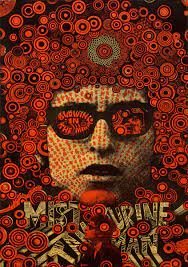
Mr. Tambourine Man
Vast reams of ink have been consumed in commentaries on this song, a great many of which have identified it as a ‘drug song’ in which the ‘tambourine man’ is the singer’s dealer. The song’s dreamlike qualities and its surreal, mesmerising imagery have often been said to prove that the singer is ‘on drugs’. Given the evidence of Dylan’s personal history and the centrality of drugs to the countercultural ethos of the 1960s (for which Dylan was the most articulate voice) there is much to support this view. On one level the song could be taken to be a description of the LSD , which transformed the landscape of popular music in the ‘psychedelic era’ of the middle years of the decade. Anyone who has had this experience could surely relate to the song. And drugs such as LSD were said by their proponents to be capable of inducing ‘spiritual’ experiences without the need to subscribe to any religious creed or set of metaphysical beliefs.
Yet Mr. Tambourine Man is so much more than a ‘drug song’. Its focus on the search for inspiration recalls a number of literary antecedents. Its use of pastoral imagery and its personification of natural forces as elements of spiritual awakening are strongly reminiscent of the work of the romantic poets. In Ode to a Nightingale Keats, who compares his vision to an opium dream, wants to ‘fly’ on the ‘viewless wings of Poesy’ to join the mystical bird in his heavenly flight:
…Away! away! for I will fly to thee,
Not charioted by Bacchus and his pards,
But on the viewless wings of Poesy,
Though the dull brain perplexes and retards:
Already with thee! tender is the night,
And haply the Queen-Moon is on her throne,
Cluster’d around by all her starry Fays;
But here there is no light,
Save what from heaven is with the breezes blown
Through verdurous glooms and winding mossy ways.…
Walt Whitman’s Out of the Cradle Endlessly Rocking is another ode to a bird – this time a mocking bird – who represents personal freedom, whose song
…that he sang to me in the moonlight on Paumanok’s gray beach,
With the thousand responsive songs at random,
My own songs awaked from that hour,
And with them the key, the word up from the waves,
The word of the sweetest song and all songs,
That strong and delicious word which, creeping to my feet,
(Or like some old crone rocking the cradle, swathed in sweet garments, bending aside,)
The sea whisper’d me….

The ‘tambourine man’ takes on the role of ‘singer’ of awe-inspiring spiritual bliss that the birds fulfil in Keats and Whitman’s poems. He is the catalyst for the narrator’s awakening into a new vision of a more meaningful, deep and rich life. Here, of course, Dylan actually sings as he provides his invocation to the ‘spirit’ that will liberate him. In a sense he becomes the nightingale or the humming bird, delighting us with this ‘song of the spheres’. What really distinguishes Mr. Tambourine Man is the way Dylan plays with language, giving us a succession of lines and images that roll off the tongue easily and stick in the mind with a resonance that is truly Shakespearean. The song has a lovely, rolling, melody – one of Dylan’s own compositions and (for once) not ‘borrowed’ from some old folk song. It also has an unforgettable, and very ‘catchy’ chorus. The first the wider public heard of the song was the single release by The Byrds – one of the covers of his works that Dylan later called ‘adverts’ for his songs. This was a massive pop hit on both sides of the Atlantic, providing an almost literal bridge between the works of Dylan and The Beatles. It became one of the first successful ‘folk rock’ singles and represented the first major stylistic response by an American ‘beat group’ to the staggering success of The Beatles in the USA. Distinguished by the unmistakeable and soaring harmonies of Jim (later Roger) McGuinn, David Crosby and Gene Clark, it limited itself to just one of Dylan’s four verses, along with several repetitions of the chorus. Those elements were enough to carry it to the top of the charts and to make it an enduring ‘pop classic’.
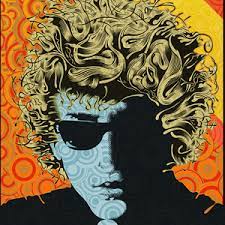
The song’s striking melody line is embodied in the natural musicality of the sound of the words of the chorus, with their easy, colloquial lilt. Each of the lines has ten syllables, although the fourth line has to be ‘squeezed in’ a little. The invocatory opening of …Hey… is immediately distinctive. It is a ‘cool’ contemporary mode of address, as if the narrator is talking to a good friend. He asks the ‘tambourine man’ to …play a song for me… declaring that …I’m not sleepy and there is no place I’m going to… implying, perhaps, that he has been up all night in some heightened state of mind. One may imagine that he is lying in bed, unable to sleep, as the thoughts turn over in his head. He is going nowhere, so can give his full attention to the tambourine man’s music. …There is no place I’m going to… is one of Dylan’s playful double negatives (like …When you ain’t got nothin’ you got nothin’ to lose… from Like a Rolling Stone). The ‘place’ the narrator is going to is ‘no place’. The journey he will be taking will be one in which he will lead us into a world of the imagination. Throughout the song, the narrator hovers on the edge of sleep. Thus what he describes is a kind of waking dream. ..In the jingle jangle morning … he declares …I’ll come following you… The phrase ‘jingle jangle’, which Dylan borrowed from one of the Beat performance artist Lord Buckley’s monologues, may be an imitation of the sound that the bells on a tambourine make. As with so many of the song’s other phrases, it is a rather wonderfully unforgettable juxtaposition of words, conjuring up a specifically musical image. The narrator promises the tambourine man that, when his period of lassitude ends, he will follow the tambourine wherever it leads him.
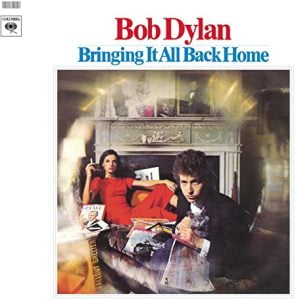
It is an unusual feature of the song that it begins with the chorus – a trick Dylan may have picked up from The Beatles, whose hits like She Loves You and Can’t Buy Me Love use the same technique, drawing listeners directly into the dialogue. The verses all operate in relation to this chorus, reassuring us that the narrator will indeed follow the musical path being laid out for him. Mr. Tambourine Man is above all a celebration of the power of music as a transformative force. It begins with a little contextualisation, placing us inside the narrator’s rather fevered consciousness. The initial metaphor …Well, I know that evening’s empire has returned into sand… places us on the beach on which the song will later reach its climax. It is as if the narrator is letting the grains of sand run through his fingers, perhaps contemplating Blake’s famous adage …To see the world in a grain of sand…. He pictures the ‘wild night’ he is yet to recover from as vanishing into the sand, an image which is reminiscent of Shelley’s Ozymandias in which …two vast trunkless legs of stone… remain in the desert as reminders of a long dead civilisation. The sand has perhaps appeared to him in a storm, temporarily blinding him. But sleep still will not come. In the apparently contradictory line …My weariness amazes me, I’m branded on my feet… we get the sense that the narrator is standing ‘outside himself’, looking down on his disembodied soul. The lines are an exquisite expression of how an individual may feel after a night of excess. The expression ‘branded on my feet’ may be taken to indicate that the tambourine man has somehow already taken possession of him, making him his ‘slave’. …I have no one to meet… he declares, indicating that the ‘trip’ he is about to take us on is one that he has no choice but to make. Thus the song already contains a feeling of an inexorable rush towards an ecstatic conclusion, although he concludes rather mysteriously that …the ancient empty street’s too dead for dreaming… The ‘street’, like the ‘empire’ is personified, giving us the impression that we are being swept into a world whose physical elements are fully alive.

THE BYRDS
Mr. Tambourine Man is a very carefully structured song. Each verse takes us further and further into the narrator’s consciousness. The number of lines in each verse also increases, beginning with six in the first verse – then eight, nine and thirteen lines. The song strains at the edges of conventional musical form, drawing the listeners in as it proceeds to its climax by means of adding more and more poetic effects. In the second verse, the invocation begins. The narrator’s imploring of the ‘tambourine man’ to …take me on a trip upon your magic swirling ship…. is one of the song’s most obvious ‘drug references’. But the ‘trip’ may also be purely a product of the singer’s imagination. Dylan now introduces a pattern of short rhyming lines. We have already had ‘trip’ and ‘’ship’ and now we get …My hands can’t feel to grip, my toes too numb to step… (‘step’ operating as a half-rhyme here) Despite his apparently stoned lassitude the narrator appears to be being motivated to engage with the music that the ‘man’ is conjuring up. Yet it is almost as if his body parts are acting independently of him. He is now waiting for his …boot heels to be wandering… a line which suggests that he is being involuntarily pulled to his feet by the power of the music. He declares that he is …ready to go anywhere… In another remarkable juxtaposition he declares that ..I’m ready for to fade into my own parade… and then, triumphantly …Cast your dancing spell my way, I promise to go under it… implying that the ‘tambourine man’ is a kind of magician who is drawing him in with his ‘magic spells’.
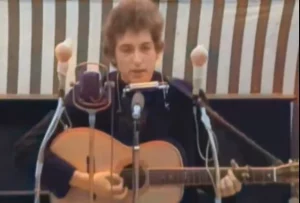
The singer continues to implore the tambourine man to ‘play that song’ but before he does so he seems to be providing him with some kind of reassurance. Now we are given the impression that the ‘music’ that the ‘man’ is supposedly making will be helping the narrator experience the wonders of nature. The wonderfully extended line …Though you might hear laughing spinning, swinging madly across the sun… emphasises the disembodied nature of the vision we are about to be presented with. Nature, it seems, is an independent force which the tambourine man can only strive to control. …It’s not aimed at anyone, it’s just escaping on the run… The way in the words literally ‘escape from’ Dylan’s tongue in a series of staccato internal rhymes continues to build up our anticipation for what is to come. Now the music and the laughter are liberated from their sources, as if they are independent forces in the dreamlike cosmos that we now inhabit. The narrator pauses for a little reflection, continuing with the striking phrase: …And if you hear vague traces of skipping reels of rhyme… Now lines and verses float around joyously and independently. We hear that …It’s just a ragged clown behind… Dylan has always had a fascination with the circus, as manifested in songs like Ballad of a Thin Man and Desolation Row. As his visions pile up, we hear that the source of the laughter that is the subject of the verse is a clown figure. Perhaps the entire scenario is taking place inside some surreal version of a circus tent. The penultimate verse ends with the narrator, now calm and composed, telling us that the clown is nothing but a shadow; perhaps of the narrator himself. So, as he turns into a clown and then a shadow, perhaps there really is no ‘tambourine man’. Perhaps he is just an aspect of the narrator’s consciousness.

The final verse is justly famous as a poetic tour de force. Dylan extends the number of lines, pushing his vision as far as it will go. The opening …Take me disappearing down the smoke rings of my mind… features the narrator surrendering his ego to nature and the imagination, with his very physical substance dispelling into smoke. This line has, not surprisingly, often been associated with marijuana consumption. But Dylan is now leading us to a place far beyond anywhere that pot might take us – to a kind of disembodied cosmic consciousness. In an image often said to be reminiscent of T.S. Eliot’s Rhapsody on a Windy Night he guides us past the …foggy ruins of time… past the narrator’s irrational fears: …far past the frozen leaves, the haunted frightened trees… and then onto the ‘windy beach’ where the ecstatic dance is about to begin. The description of ecstatic release in the next lines has few parallels in English literature in terms of describing ecstatic experience. We are …far from the twisted reach of crazy sorrow… And then we …dance beneath the diamond sky with one hand waving free… indicating personal spiritual liberation. The alliteration of ‘dance’ and ‘diamond’ is transformed into a hallucinatory vision in which the sound of the words themselves create an eerie musical backdrop: …Silhouetted by the sea, circled by the circus stands… with all those ‘s’ sounds sounding like the hissing of the surf itself. The sea, it seems, has risen up around him to ‘silhouette’ him. We are simultaneously on a beach and in a circus ring. There are three ‘t’ sounds in the concluding …Let me forget about today until tomorrow… The narrator finally declares himself to be emotionally and spiritually free – to be literally ‘living in the moment’. This is a moment of absolute transcendence, which is naturally followed by a repetition of the all-consuming chorus.

Mr. Tambourine Man functions as a kind of declaration of independence for Dylan. It represents the key moment in which his writing shifts from the political to the transcendental. The song was written in mid-1964 and a version was tried out at the Another Side sessions later in the year, featuring Ramblin’ Jack Elliott on rather uncertain harmony vocals. But this rather unimpressive take was shelved and the song finally appeared on Bringing it All Back Home in 1965, shortly before The Byrds’ version was released. It has since been a feature of Dylan’s set lists throughout his career. Dylan has never changed the words. There are many outstanding performances of the song, and a few that are rather bizarre, as Dylan experimented with time signatures in the late 2000s. In 1966 the song was featured as part of the ‘acoustic half’ of the shows in which extraordinarily intense versions of the songs, featuring many drawn out syllables and extended harmonica solos. Dylan sounds desperately drawn here to join the ‘cosmic dance’. In contrast, the mesmeric solo version Dylan performs in Boston on 25 November 1976, which is featured at the beginning of Martin Scorsese’s Rolling Thunder Revue: A Bob Dylan Storymr. tambourine man, dylan, bob, (2019), is gentle and affirming.
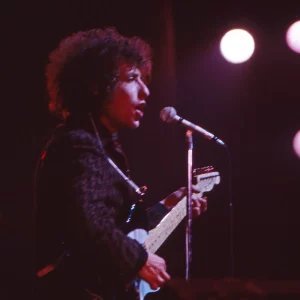
There are actually surprisingly few cover versions of Mr. Tambourine Man. Many of them, like the warmly engaging ‘pop’ versions by Johnny Rivers and Stevie Wonder, tend to be styled more closely to The Byrds’ famous version than Dylan’s. Judy Collins recorded a straightforward ‘folk’ reading with some quite beautiful vocals and Barb Jungr gave the song a jazzy inflexion. One of the most distinctive covers is that of Melanie, who gives the song a particularly bitter sweet reading. But the song is not one for which it is easy to change musical arrangements, as its melodic development is already so strong. It is one of Dylan’s most perfectly realised creations. It allows the poet to step boldly and defiantly into ‘the dance’ of symbolist art. At the same time it displays a certain ‘pop’ sensibility which has turned it into a much-loved ‘golden oldie’. Mr. Tambourine Man has thus a unique status – both symbolist poem and classic hit single. Here Dylan invokes the spirit of musical poetry in a kind of declaration of independence from his role as a ‘public poet’. It is the beginning, perhaps, of the exploration of inner consciousness and spiritual meaning that will loom large in much of Dylan’s long career.
https://www.youtube.com/watch?v=HlYw1NsT_wE
DAILY DYLAN NEWS at the wonderful EXPECTING RAIN
THE BOB DYLAN PROJECT- COMPREHENSIVE LISTINGS
STILL ON THE ROAD – ALL DYLAN’S GIGS
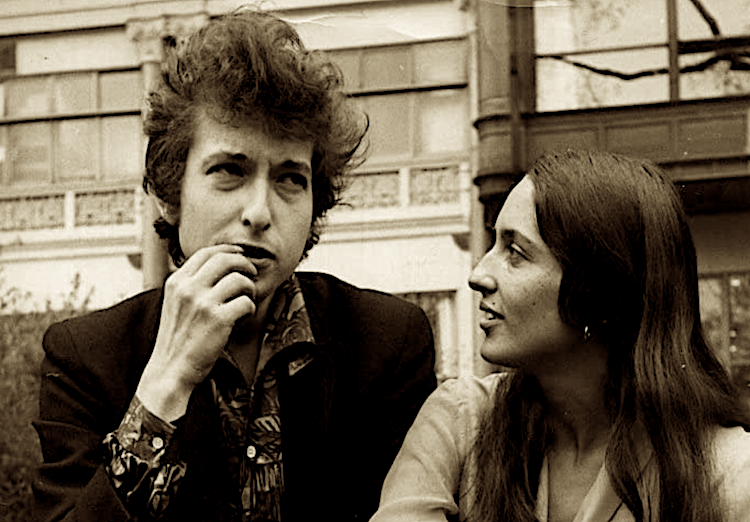


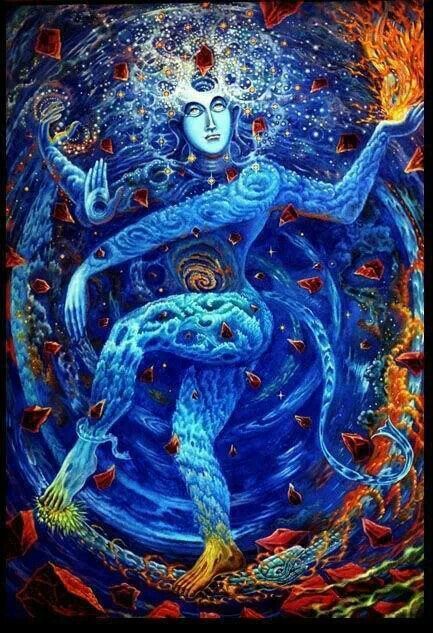
Leave a Reply